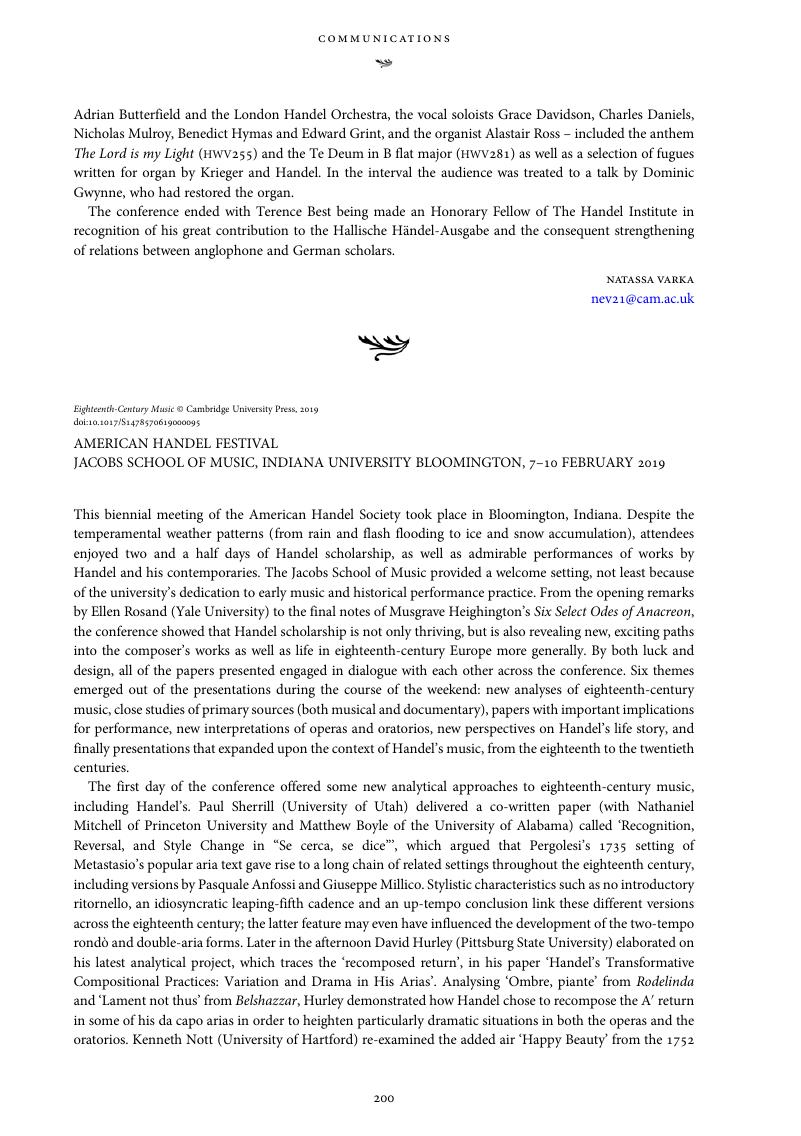No CrossRef data available.
Article contents
AMERICAN HANDEL FESTIVAL JACOBS SCHOOL OF MUSIC, INDIANA UNIVERSITY BLOOMINGTON, 7–10 FEBRUARY 2019
Published online by Cambridge University Press: 20 August 2019
Abstract
An abstract is not available for this content so a preview has been provided. Please use the Get access link above for information on how to access this content.

- Type
- Communications: Conference Reports
- Information
- Copyright
- Copyright © Cambridge University Press, 2019




